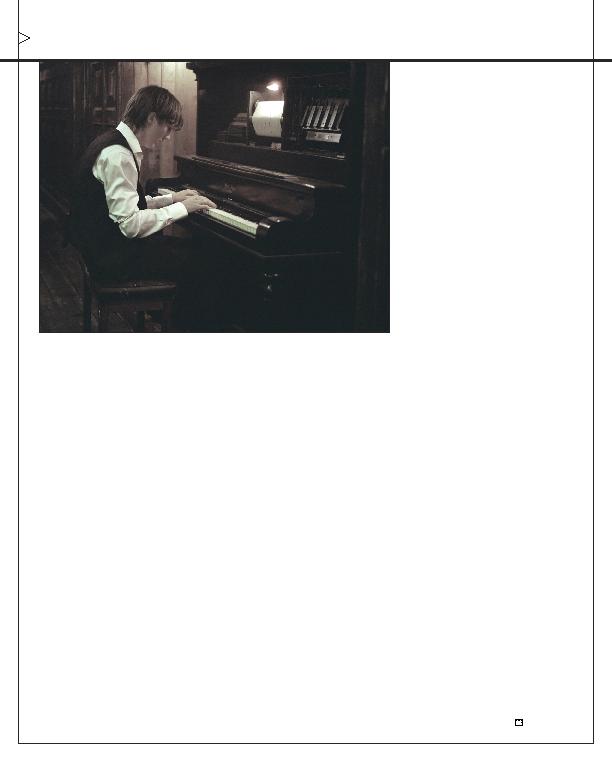
having made films in Icelandic (Nói Al-
bínói), Danish (Voksne Mennesker aka Dark
Horse) and now makes his English-language
debut with The Good Heart. Regardless of
language, all his films speak of a common
phenomenon: that of people on the fringe
of society. His latest film is no exception.
oted owner of an inner-city bar populated by
a diverse crew of low-maintenance regulars.
With time and his caustic attitude quite lit-
erally killing him, a heart attack sends
Jacques to the hospital. There he befriends a
kind-hearted, young homeless man, Lucas
(Paul Dano), and decides to take Lucas under
his wing, intent on bequeathing him the bar
and teaching him how to navigate its some-
times harsh environment.
outsiders living in a decaying urban cen-
ter? One piece at a time. "The title of the
movie was one of the first ideas, and that
led me to the main theme of the story,"
Kári explains. "Quickly afterwards, the
of the plan. Kári says that he is fascinated
by languages and loves to study the nu-
ances of how people speak. But that's not
his only reason for telling stories in other
tongues. "Strangely enough, I almost find
it easier to work in foreign languages," he
says. "The Icelandic language is terrific for
literature, but it's very stiff when you're
writing dialogue. So I feel more free when
I'm working in Danish or English. It's a
more playful process."
developed characters and what's unique
about Good Heart is the contrast between
two very different men who need what the
other can provide. Jacques, the aging bar
owner, seems to despise every human being
he comes into contact with, while the
much younger and homeless Lucas rou-
tinely takes in strays and really cares about
everyone. So what is Kári's recipe to creat-
ing such diverse characters? Infuse each
one with a piece of yourself. "I can see my-
self in both characters," he says. "I have the
with the more cynical views of Jacques."
story creation. Once Kári knows the char-
acters, he begins the process of gathering
all the loose story elements into one place
and allows them to form organically. "I
look at writing in terms that I'm just hang-
ing out with the material," he says. "I hang
out a lot with these ideas and slowly it
kind of all comes together like a puzzle and
I see the order."
closely to the script, as a director he actu-
ally plans on improvising some smaller
scene material, something that he used ex-
tensively with scenes featuring the regular
bar patrons in The Good Heart. "All of
those scenes were improvised," Kári re-
veals. "I would just show up with a very
vague idea of a scene, but then we would
improvise the dialogue. A lot of nice and
unexpected material came out of that
process -- hilarious stuff that I would not
have thought of beforehand."
film, Jacques buys a duck and keeps it in a
cage in the bar, planning to "marinate it
from the inside out" for a Christmas feast.
But one of the bar's regulars has another
idea and opens the cage to liberate the an-
imal, urging him to be free. The duck,
however, simply waddles right back into
the cage. The subtext of this moment sym-
bolized the mentality of the film's charac-
ters on many levels, but Kári says the
whole thing was unplanned. "That was
just something the duck did," he recalls.
"It was a magical performance to me. It
just all happened on the spot."
Iceland with a much smaller crew. Despite
its independent size, when compared to
most studio films, the larger size of the
crew on his New York shoot made Kári ap-
preciate the creative freedom of smaller
productions. "When you're working with
really big crews, there is a big risk of the
process becoming more of an execution
than a creative process," Kári says. "That's
the trickiest part of filmmaking wherever
you are -- trying to keep the shooting
process flexible and alive."